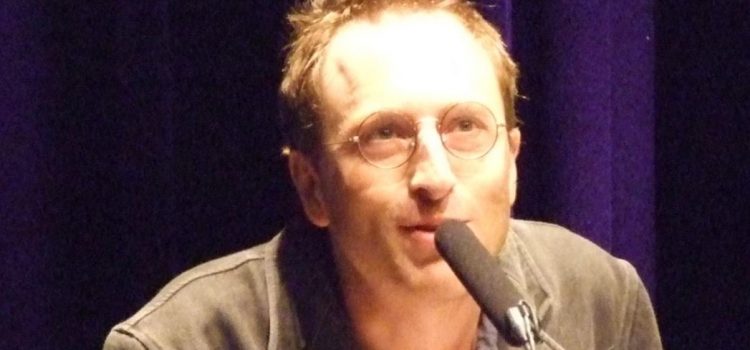
Can someone be misdiagnosed as a psychopath? Why are mental health evaluations so complex?
British journalist Jon Ronson spoke to Tony, a Broadmoor inmate, and Toto, a former leader of a Haitian paramilitary group, in his book The Psychopath Test. One is a diagnosed psychopath who might not actually fit the bill, and the other was released from an institution.
Keep reading to learn about Ronson’s meetings with Tony and Toto.
Psychological Disorders and Scientology
L. Ron Hubbard’s strong opposition to psychiatry led Scientology followers to view organizations like the American Psychiatric Association as harmful and embodying “Antisocial Personalities.” This hostility fueled aggressive actions against individuals such as Harry Bailey, whose questionable practices at a mental health facility resulted in patient deaths. Bailey’s tragic suicide was heavily influenced by an anti-psychiatry organization with ties to Scientology.
Meeting Tony at the Mental Health Institution
The author of The Psychopath Test, Jon Ronson, meets Tony, an inmate at the infamous Broadmoor psychiatric hospital, who claims he is not truly a psychopath despite being a diagnosed psychopath. His situation highlights the complex consequences of labeling people as ‘psychopaths’ or those with mental health issues.
Tony admits that his intentional strategy of faking insanity to be transferred to Broadmoor instead of serving a prison sentence was a terrible mistake. His attempts to demonstrate his sanity only reinforced his psychiatrists’ belief in his mental instability.
Tony sent the author a package containing details of his past that convincingly portrayed the mental illness he had falsely presented to mental health professionals in 1998. This included a wide range of delusions and feelings of danger that seemingly indicated a psychotic condition.
Evaluating Rehabilitation Methods at Broadmoor
The story of Broadmoor prompts us to consider whether the rehabilitation techniques used by this institution, which aims to prepare individuals with homicidal and psychopathic tendencies for eventual reintegration into society, might be a better alternative to the possibility of indefinite confinement based on assessments, particularly when examining Tony’s case.
The author explores Tony’s time at Broadmoor, describing his attempts to secure his release by refusing treatment, distancing himself from the medical staff, and expressing fears about being transferred to a more intimidating facility than Broadmoor, such as Bethlem. Despite his efforts to justify these strategies, his seemingly rational behavior is paradoxically interpreted as evidence of his worsening mental condition.
Tony’s struggle to escape the mental health system and challenge the psychopathy label highlights the potential risks and inherent subjectivity of psychiatric evaluations, especially for those who claim to be mentally sound within such institutions.
(Shortform note: The case of Tony in Broadmoor could raise questions about the reliability of psychiatric diagnoses and the potential for misdiagnosis.)
Comparing Tony’s Story to Released Psychopathic Individuals
The author connects Tony’s story to the narratives of psychopathic individuals who were released from institutions like Oak Ridge. The discussion focuses on how an individual’s history influences whether someone with psychopathic tendencies remains free or gets caught.
Conversation With a Former Haitian Paramilitary Leader
Ronson spoke with Emmanuel “Toto” Constant, a former leader of a Haitian paramilitary group who was convicted of fraud related to housing loan schemes. Despite his engaging and skilled social presence, Toto’s past is tainted by violent behavior. Toto always maintains an appearance that contradicts his historical actions.
The author reflects on Toto’s true character while emphasizing his ability to evoke sympathy through manipulated emotional displays, such as pretending to cry. Toto’s captivating personality and history of assertive behavior have raised questions about whether these traits indicate a psychological disorder or simply reflect a talent for influencing others’ actions.
In his interactions, Toto exhibits characteristics that could suggest psychopathy while also demonstrating a shrewd ability to control his own narrative. He showed a willingness to engage with Ronson, and his efforts to appear friendly suggest a sophisticated understanding of social interactions, which he uses to shape opinions in his favor.
(Shortform note: The portrayal of Emmanuel “Toto” Constant could be influenced by the author’s perspective and may not fully account for the complexity of his character or the socio-political context of his actions.)
The Complexity of Mental Health Evaluations
Ultimately, the author encourages deep consideration of the intricate processes involved in assessing mental health and the nuanced meanings of terms like ‘individuals with psychopathic traits’ through the stories of Tony and Toto. These cases provide a clear lens into the intersection of mental health and criminal behavior, a realm characterized by complex diagnostic challenges where the intricacies of the human psyche remain profoundly mysterious.






